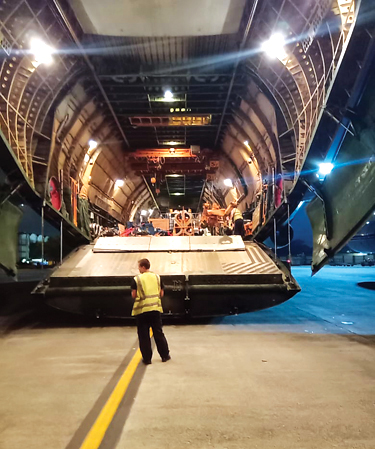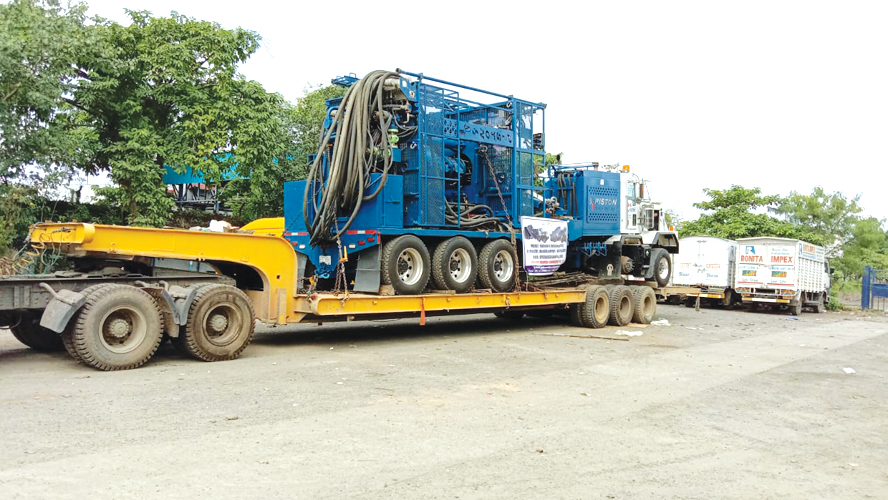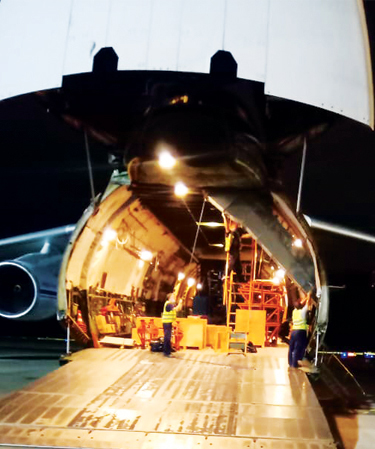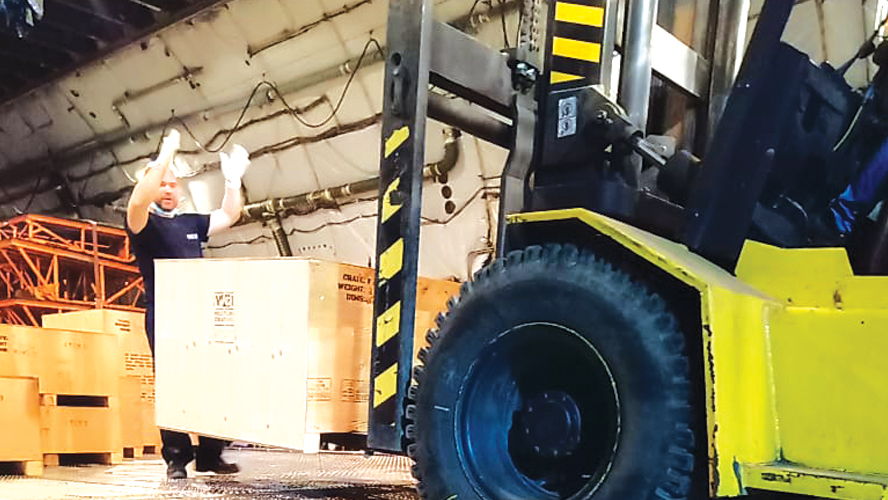The dousing of the blowout at Baghjan is a classic example of the coordinated integrated logistics and service assistance we offer to our distant clients. The Baghjan Oilfield in Tinsukia district, Assam, a state in the north east of India, has 21 active wells, of which 4 produce natural gas while the remaining produce oil. Baghjan Oilfield’s Well No. 5 was established in 2006 and produced natural gas. It had drilled down to a depth of 3,870 m and was producing between 80,000 to 100,000 standard cubic metres of gas per day before the leak.
The 2020 Assam gas and oil leak, also referred to as the Baghjan gas leak, is a natural gas blowout that occurred in Baghjan Oilfield on 27th May 2020. The site is operated by Oil India Ltd. (OIL), a public sector undertaking. The leaking well sub sequently caught fire, which resulted in two deaths, large-scale local evacuations and environmental damage to the nearby Dibru-Saikhowa National Park.
After the initial evacuation of nearly 3000 personnel, a Canadian company was appointed by OIL to assist in killing the fire with their equipment and personnel. This Canadian company in turn contracted a Singapore-based company to handle the Indian side of the logistics and compliances.
M/s. Pentagon Freight Services Private Ltd., Singapore, contacted Arya Offshore Services Pvt. Ltd., which arranged for Boxco Logistics to be available to respond to queries, make multiple arrangements in advance, prepare documentation and coordinate with OIL to obtain the necessary documentation to ensure all clearances were compliant and speedy. Boxco also prepared the equipment and ensured vehicles were ready when needed. Thus, while the Canadian contractor was loading an Antonov An-124, frantic activities were centered around the J M BAXI GROUP, which had to coordinate at various levels with staff at Baghjan, OIL’s regional HQ in Kolkata, Pentagon Freight Systems in Singapore and the contractor in Calgary, Canada.
Initially, the charterers were to bring the Volga Dnepr An-124 aircraft to Gauhati, using Kolkata as a technical halt. They were instructed by OIL to undertake the clearance of the cargoes at Kolkata. The JMB teams advised that since the aircraft was to fly to Gauhati anyway, it was better to clear the cargoes at Gauhati and began to arrange this. At Kolkata, the cargo, the aircraft and its consumables would be declared as imports, since then the Kolkata–Gauhati leg would be purely for domestic carriage. Customs was approached, both at Kolkata and Gauhati, in advance to help facilitate the transport of the critical cargo. The contracts, plans and other documents were studied and the appropriate customs paperwork prepared. The requirements of the Bureau of Civil Aviation Security, CISF and the airport authorities were all simultaneously understood and conveyed. Initially, it was reported that upon limiting the touchdown weight of the loaded aircraft, all clearances for Gauhati had been obtained. However, much later the permission was reportedly denied due to the inadequate firefighting capabilities at the airport for the An-124.
The Kolkata team showed true resilience and grit in attending to the change in the flight destination from Gauhati to Kolkata. They had to work with various organisations and with different contracts to obtain clearances from multiple agencies for handling the cargo on the tarmac for the chartered flight. It must be mentioned that the dynamic situations were handled nearly instantaneously.
The team took cognisance of the many imponderables and found solutions, to the satisfaction of the client. However, when such projects are handled, it is very rare that things go in textbook style and this project was no different. With just a day remaining for the aircraft to arrive, it was reported that the foreign national who was to operate the rig out of the aircraft had not been given security clearance. The rig, which was the main cargo apart from about a hundred other items, was a 40-tonne tandem-steered tri-axle snubbing/hydraulic workover unit, a very complicated thing to drive out. Boxco rose to the occasion. A trained Indian operator was provided, the appropriate paperwork completed, meetings arranged with the Canadian operators to confirm the rig controls and with proper approvals, the Indian operator was tasked with doing the needful.
The aircraft arrived at 0130 hours. By 0430 hours, all the cargo and the rig were safely discharged and stacked under the supervision and control of Boxco’s team, who worked in tandem with the An-124’s crew and the ground handlers. Boxco’s team completed the task as well as would be expected from the most seasoned handlers in the trade. It must be said that the entire team was focused the whole night due to the adrenalin-fueled tension resulting from the various challenges. The operation at a busy major airport involved backing the critical rig safely out from the intimidating interior of the An-124 and onto the cargo tarmac, which the specialist handlers flown in from Canada monitored remotely, and looking after the pieces of loose equipment.
Once the customs clearance was completed within the airport complex, the complete cargo including the rig was driven out by Boxco’s operators. Everything was then stacked onto vehicles and driven from Kolkata to the site by transporters appointed by OIL.
The Indian and foreign experts killed the disastrous well 173 days after it had suffered a blowout, which ejected natural gas and associated compounds uncontrollably from a depth of 3.7 km. The well was killed 12 days after the 60-tonne snubbing unit, flown in from Calgary, Canada, reached the site on 4th November 2020.
As we go to press, the abandonment of the well is now complete and arrangements are being made to transport the equipment back to Calgary, either by sea or air, and Boxco Logistics has been requested to provide customs clearance and allied services at Kolkata.
This was yet another unique project for J M BAXI GROUP and two of the group’s companies. Team members in Mumbai and Kolkata had to interact with freight forwarders in Singapore and technical teams in Calgary.
This was a truly multi-national project of national importance. It was completed successfully and carefully by a professional team.



